Scientific Outputs
-
Case Report: Multicentric Castleman Disease as a Manifestation of Immune Reconstitution Inflammatory Syndrome in Malawi
December 2022 INTRODUCTION Multicentric Castleman disease (MCD) is a lymphoproliferative disorder characterized by systemic inflammation, lymphadenopathy, and cytopenias. MCD caused by Kaposi sarcoma herpesvirus (MCD-KSHV) frequently arises in the context of HIV. It can be associated with immune reconstitution inflammatory syndrome (IRIS), but MCD-IRIS is rarely reported in sub-Saharan Africa (SSA) where HIV and KSHV … Read more
-
Tobacco and Other Risk Factors for Esophageal Squamous Cell Carcinoma in Lilongwe Malawi: Results from The Lilongwe Esophageal Cancer Case: Control Study
June 2022 OBJECTIVE Esophageal cancer is the second commonest cancer in Malawi, and 95% of all cases are esophageal squamous cell carcinoma (ESCC). Very little is known about the epidemiology of ESCC in Malawi including risk factors. The main objective of the study was to evaluate and describe risk factors of ESCC in Malawi. METHODS … Read more
-
African Esophageal Cancer Consortium (AfrECC). Treatment Outcomes of Esophageal Cancer in Eastern Africa: Protocol of a Multi-Center, Prospective, Observational, Open Cohort Study
January 2022 BACKGROUND Esophageal squamous cell carcinoma (ESCC) is a major cause of cancer morbidity and mortality in Eastern Africa. The majority of patients with ESCC in Eastern Africa present with advanced disease at the time of diagnosis. Several palliative interventions for ESCC are currently in use within the region, including chemotherapy, radiation therapy with … Read more
-
An International Report on Bacterial Communities in Esophageal Squamous Cell Carcinoma
Dec 2022 The incidence of esophageal squamous cell carcinoma (ESCC) is disproportionately high in the eastern corridor of Africa and parts of Asia. Emerging research has identified a potential association between poor oral health and ESCC. One possible link between poor oral health and ESCC involves the alteration of the microbiome. We performed an integrated … Read more
-
Spatial Distribution of Incident Pediatric Burkitt Lymphoma in Central and Northern Malawi and Association with Malaria Prevalence
June 2022 PURPOSE Burkitt lymphoma (BL) accounts for 90% of pediatric lymphomas in sub-Saharan Africa. Plasmodium falciparum (Pf) malaria is considered an etiological factor of BL. We describe the geographic distribution of pediatric BL in Malawi and association with malaria prevalence (PfPR). We also examine the influence of travel time to cancer referral center as … Read more
-
Characteristics and Outcomes of Acute Lymphoblastic Leukemia in Adolescents and Young Adults in Malawi
June 2022 PURPOSE There are limited data on treatment and outcomes for acute lymphoblastic leukemia (ALL) among adolescents and young adults in sub-Saharan Africa. We describe a prospective observational cohort in Malawi. METHODS Patients age 15-39 years with newly diagnosed ALL at Kamuzu Central Hospital, Malawi, were enrolled from 2013 to 2019; follow-up was censored … Read more
-
Comparison of Baseline Lymphoma and HIV Characteristics in Malawi Before and After Implementation of Universal Antiretroviral Therapy
Sep 2022 Access to antiretroviral therapy (ART) led to epidemiological changes in human immunodeficiency virus (HIV) associated lymphoma in high-income countries such as reductions in diffuse large B-cell lymphoma (DLBCL) and stable or increased Hodgkin lymphoma (HL) and Burkitt lymphoma (BL). In 2016, Malawi implemented a universal ART (UART) policy, expanding ART eligibility to all … Read more
-
The Role of Telepathology in Improving Cancer Diagnostic and Research Capacity in Sub-Saharan Africa
October 2022 Non-communicable disease (NCD), including cancer, disproportionately affect Low- and Middle-Income Countries (LMICs). This inequity is in part due to limitations of pathology services, both human and infrastructural. While significant improvements have been made to address these gaps, creative approaches that are mindful of regional priorities, cultural differences, and unique local challenges are needed. … Read more
-
Cancer Care Cost-Effectiveness in Low-Income and Middle-Income Countries: Time to Shift the Burden of Proof
August 2022 Kaposi sarcoma is one of the most common cancers in sub-Saharan Africa and is associated with substantial morbidity and mortality.1 Kaposi sarcoma is caused by the Kaposi’s sarcoma herpesvirus. Although Kaposi sarcoma was recognised in endemic form before the HIV epidemic, HIV has driven an epidemic, AIDS-associated form of the disease.2 Given the … Read more
-
Prevalence of Traditional, Complementary, and Alternative Medicine (TCAM) Among Adult Cancer Patients in Malawi
April 2022 PURPOSE The objective of this study is to document the prevalence of traditional, complementary, and alternative medicine (TCAM) use by adult cancer patients at a national teaching hospital in Malawi. We aim to document the products/therapies used, the reason for use, as well as patient-reported satisfaction with TCAM practitioners and modalities. METHODS We … Read more
-
Quality of Life Among Patients with Cancer and Their Family Caregivers in the Sub-Saharan Region: A Systematic Review of Quantitative Studies
March 2022 Guided by the World Health Organization quality of life (WHOQOL) framework, this systematic review aimed to examine evidence about the prevalence and severity of QOL-related health problems and their influencing factors in Sub-Saharan Africa (SSA). We identified eligible publications in English language from PubMed, Cumulative Index of Nursing and Allied Health Literature Plus … Read more
-
A Novel Cervical Cancer Screen-Triage-Treat Demonstration Project with HPV Self-Testing and Thermal Ablation for Women In Malawi: Protocol for a Single-Arm Prospective Trial
April 2022 Cervical cancer is the leading cause of cancer mortality among Malawian women, despite being preventable through screening and preventive therapy. In 2004, Malawi implemented a national screening program, using visual inspection with acetic acid (VIA) and cryotherapy, but its success has been limited due to equipment and human resources challenges. Since the development … Read more
-
Assessing Community Health Workers’ Time Allocation for a Cervical Cancer Screening and Treatment Intervention in Malawi: A Time and Motion Study
September 2023 BACKGROUND Community health workers (CHWs) are essential field-based personnel and increasingly used to deliver priority interventions to achieve universal health coverage. Existing literature allude to the potential for detrimental effects of multi-tasking CHWs. This study objective was to assess the impact of integrating cervical cancer screening and prevention therapy (CCSPT) with family planning … Read more
-
Perceptions of Cervical Cancer and Motivation for Screening Among Women in Rural Lilongwe, Malawi: A Qualitative Study
February 2022 INTRODUCTION Cervical cancer is the leading cause of cancer death among women in Malawi. Low awareness of cervical cancer and negative perceptions of screening can prevent women from participating in preventative strategies. We sought to explore perceptions and motivations for screening among women who participated in a cervical cancer screen-and-treat pilot study in … Read more
-
Tobacco and other risk factors for esophageal squamous cell carcinoma in Lilongwe Malawi: Results from the Lilongwe esophageal Cancer case: Control Study
Esophageal cancer is the second commonest cancer in Malawi, and 95% of all cases are esophageal squamous cell carcinoma (ESCC). Very little is known about the epidemiology of ESCC in Malawi including risk factors. The main objective of the study was to evaluate and describe risk factors of ESCC in Malawi. We conducted a case-control … Read more
-
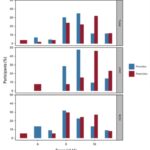
Implementation and Evaluation of Educational Videos to Improve Cancer Knowledge and Patient Empowerment
February 17 2022 PURPOSE Low health literacy is a leading cause of treatment abandonment among patients receiving cancer care at Kamuzu Central Hospital (KCH) in Malawi. METHODS We developed cancer educational videos featuring Malawian providers and played them in the KCH oncology clinic. The videos addressed cancer-related topics, including disease biology, common myths, diagnostic procedures, … Read more
-
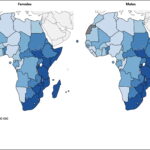
Improving Access to Self-Expanding Metal Stents for Patients With Esophageal Cancer in Eastern Africa: A Stepwise Implementation Strategy
January 2021-The eastern corridor of Africa is affected by a high burden of esophageal cancer (EC), with > 90% of patients presenting with advanced disease. Self-expanding metal stents (SEMS) have been previously reported as safe and effective for palliation of malignant dysphagia in resource-limited settings; however, access is limited throughout Eastern Africa. In response to … Read more
-
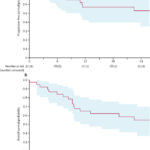
Safety and efficacy of rituximab in patients with diffuse large B-cell lymphoma in Malawi: a prospective, single-arm, non-randomised phase 1/2 clinical trial
July 2021- There are no clinical trials involving patients with diffuse large B-cell lymphoma (DLBCL) in sub-Saharan Africa since antiretroviral therapy (ART) for HIV became widely available in this region. We aimed to establish the safety and efficacy of rituximab plus cyclophosphamide, doxorubicin, vincristine, and prednisone (R-CHOP) in patients with DLBCL in Malawi. This prospective, … Read more
-
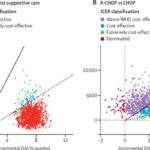
Comparison of best supportive care, CHOP, or R-CHOP for treatment of diffuse large B-cell lymphoma in Malawi: a cost-effectiveness analysis
July 2021- Cost-effectiveness data for cancer treatment are needed from sub-Saharan Africa, where diffuse large B-cell lymphoma (DLBCL) is a common, curable cancer. In high-income countries, the standard of care for DLBCL is R-CHOP (rituximab, cyclophosphamide, doxorubicin, vincristine, and prednisone) chemoimmunotherapy. Rituximab is often not available in sub-Saharan Africa due to perceived unaffordability, and treatment … Read more
-

Feasibility of upfront mobile money transfers for transportation reimbursement to promote retention among patients receiving lymphoma treatment in Malawi
May 2021-Cancer outcomes in sub-Saharan Africa (SSA) remain suboptimal, in part due to poor patient retention. Many patients travel long distances to receive care, and transportation costs are often prohibitively expensive. These are well-known and established causes of delayed treatment and care abandonment in Malawi and across SSA. We sent visit reminder texts and offered … Read more
-

Pediatric lymphoma patients in Malawi present with poor health-related quality of life at diagnosis and improve throughout treatment and follow-up across all Pediatric PROMIS-25 domains
August 2021- Patient-reported outcomes (PROs) that assess health-related quality of life (HRQoL) are increasingly important components of cancer care and research that are infrequently used in sub-Saharan Africa (SSA). We administered the Chichewa Pediatric Patient-Reported Outcome Measurement Information System Pediatric (PROMIS)-25 at diagnosis, active treatment, and follow-up among pediatric lymphoma patients in Lilongwe, Malawi. Mean … Read more
-

Epidemiology of haematological malignancies in people living with HIV
August 2020- SERIES: People living with HIV or AIDS are at increased risk of Hodgkin and non-Hodgkin lymphoma compared with HIV-negative individuals. Data on the risk of multiple myeloma or leukaemia are inconsistent and of low quality but the risk does not seem to be increased. Specific haematological malignancies occur in different contexts of age, … Read more
-

Improving outcomes for non-Hodgkin lymphoma in Sub-Saharan Africa: where to start?
March 2020- COMMENTARY: As governments in sub-Saharan Africa (SSA) expand access to effective antiretroviral therapy (ART) for HIV-infected patients, cancer is becoming an increasingly important cause of preventable death in the region. According to the Global Burden of Disease study, cancer is now the second leading cause of death worldwide, and, despite decreases in cancer … Read more
-
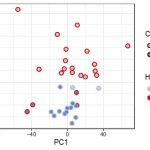
Identifying Transcriptional Profiles and Evaluating Prognostic Biomarkers of HIV-associated Diffuse Large B-cell Lymphoma From Malawi
February 2020-This study provides among the first molecular characterizations of DLBCL from SSA, demonstrates marked gene expression differences by HIV status, and identifies genomic and immunophenotypic characteristics that can inform future basic and clinical investigations.
-

Outcomes and Prognostic Factors for Malawian Women with Breast Cancer
April 2020 – Breast cancer incidence in sub-Saharan Africa is increasing, and the region has the highest age-standardized breast cancer mortality rate worldwide. In a setting where breast cancer data are limited, our findings indicate that late stage presentation, HER2-enriched and triple-negative subtypes, and HIV coinfection were associated with mortality and were more prevalent in … Read more
-

Modified EPOCH for High-Risk Non-Hodgkin Lymphoma in Sub-Saharan Africa
January 2020 – Aggressive NHL is among the most common cancers in SSA where CHOP is the standard treatment and outcomes are poor. We treated patients with a modified EPOCH regimen with moderate outcomes. Results indicate that this regimen was feasible and effective in a small cohort and suggest EPOCH with setting-appropriate modifications may be … Read more
-
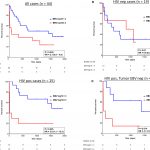
High pretreatment plasma EBV DNA level is a poor prognostic marker in HIV-associated, EBV-negative DLBCL
November 2019 – Although plasma EBV DNA measurement has established prognostic utility in EBV‐driven lymphomas, findings from this study suggest that EBV reactivation in nontumor cells is a poor prognostic finding even in HIV‐positive patients with convincingly EBV‐negative DLBCL.
-
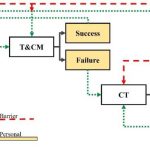
Facilitators and Barriers to Traditional Medicine Use Among Malawian Cancer Patients
October 2019 – Increasing access to conventional cancer treatment in low-income countries is an important public health initiative to address the global burden of cancer. Our findings indicate that cancer patients in our cohort rely on a pragmatic and experience-based treatment selection process and provide insights to the various factors that influence T&CM use among cancer … Read more
-
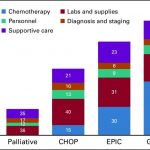
Microcosting Analysis of Diffuse Large B-Cell Lymphoma Treatment in Malawi
July 2019 – Cost analysis of treating diffuse large B-cell lymphoma (DLBCL) in Malawi indicates that per-patient cost of first-line treatment of DLBCL in Malawi is low relative to high-income countries, suggesting that investments in fixed-duration, curative-intent DLBCL treatment may be attractive in sub-Saharan Africa.
-
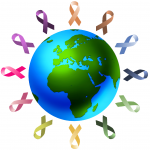
Global Oncology
June 2019 – This article highlights the important role of cancer care and research outside the United States, particularly in low- and middle-income countries, in furthering innovative solutions for cancer that can be applied worldwide.
-

Epidemiological and Histopathological Profile of Malignant Melanoma in Malawi
April 2019 – Studies on malignant melanoma have largely focused on Caucasian populations with very limited data on the disease in black Africans. This retrospective study characterizes melanoma cases in Lilongwe, Malawi and demonstrates that malignant melanoma occurs in black Malawians and may be an under-appreciated malignancy.
-
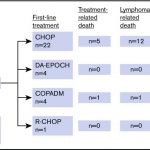
Prospective Study of Burkitt Lymphoma Treatment in Adolescents and Adults in Malawi
February 2019 – Although Burkitt lymphoma (BL) is common in sub-Saharan Africa (SSA) and highly curable in high-income countries, there are few prospective nonpediatric BL studies from SSA and no regional standard of care. This study represents one of the best characterized prospective cohorts of nonpediatric BL in SSA.
-

Rosai-Dorfman Disease in Malawi
December 2018 – We present the case report of an HIV‐negative female adolescent with Rosai-Dorfman disease, a rare lymphoproliferative disease with limited cases reported in sub‐Saharan Africa.
-

Mature Outcomes and Prognostic Indices in DLBCL in Malawi
December 2018- Outcomes for diffuse large B-cell lymphoma (DLBCL) in sub-Saharan Africa are poorly described. We report mature data from one of the first prospective SSA cohorts and propose a setting-appropriate prognostic model.
-
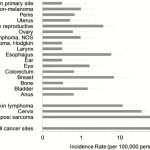
High Cancer Burden Among ART Users in Malawi
December 2018- In sub-Saharan Africa, limited epidemiological data describe cancer burden among ART users. We link cases from the population-based cancer registry with EMRs supporting ART delivery in Malawi’s two largest HIV cohorts, Lighthouse Trust and Queen Elizabeth Central Hospital to identify cancer burden.
-
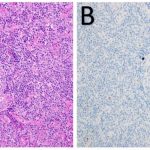
HIV-Associated Multicentric Castleman Disease In Malawi
November 2018- Despite high burden of Kaposi sarcoma and HIV, multicentric Castleman disease is rarely reported in SSA. To supplement previous reports on MCD cases in Malawi, we describe a larger cohort of MCD patients with longer follow-up.
-
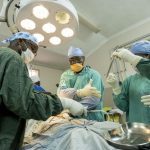
A Tailored Approach to Building Specialized Surgical Oncology Capacity in Malawi
November 2018 – We report on early experiences and outcomes of making life-saving surgical treatment for cervical cancer available for the first time as a routine clinical service in Malawi.
-

Ending Tribalism in Global Oncology
October 2018- Dr. Satish Gopal urges the global health community to prioritize meaningful multilateral partnerships in order to improve the coordination of patient care and research.
-

‘Discovering’ primary effusion lymphoma in Malawi
September 2018- Although HIV and HHV8 are highly prevalent in SSA, there are scarce reports of primary effusion lymphoma (PEL) from the region, likely reflecting underdiagnosis. This article describes the two recently confirmed cases of extracavitary PEL in Malawi.
-
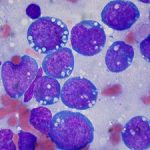
Treating Burkitt Lymphoma in Children and AYA in Sub-Saharan Africa
July 2018- Although highly effective, high-intensity cytotoxic treatments for Burkitt lymphoma are available in resource-rich settings, these therapies are usually not feasible in SSA, and lower-intensity continuous infusion approaches are impractical. We review current treatment approaches in SSA and discuss options for risk stratification and individualize therapy.
-
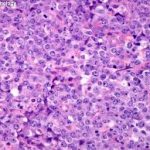
Plasmablastic lymphoma in Malawi
June 2018- Despite high prevalence of HIV in SSA, descriptions of Plasmablastic lymphoma (PBL) are scare. In one of the first clinical descriptions of PBL, we report on characteristics, treatment, and outcomes of 12 pathologically confirmed PBL cases in Lilongwe.
-

Dissecting Heterogeneous Outcomes for Paediatric Burkitt Lymphoma in Malawi after Anthracycline-Based Treatment
June 2018 – We discuss our experience in relation to others’ major contributions to paediatric Burkitt lymphoma care in sub-Saharan Africa. We believe that sharing of heterogeneous regional experience is valuable for rigorous examination, and look forward to on-going collaborative efforts to define best approaches for this disease, which we are actively pursuing with many … Read more
-

Translation, Psychometric Validation, and Baseline Results of the PROMIS-25 measures
June 2018- Efforts to translate and culturally validate patient-reported health-related quality of life measures are scarce in SSA are scarce. This study translates the PROMIS-25 to Chichewa and assesses its validity and reliability in our setting.
-
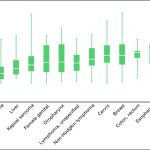
Frequent HIV and Young Age Among Individuals With Diverse Cancers
June 2018- We report the epidemiology of patients with cancer recorded by a hospital-based cancer registry at Kamuzu Central Hospital, the sole provider of comprehensive oncology services for half the country and location of a high-volume pathology laboratory.
-

Guidelines for sub-Saharan Africa: a Call for Evidence
April 2018- Cancer care in resource-limited settings is radically different from cancer care in resource-rich settings. Drs. Painschab and Gopal comment on the urgent need for region-specific data and clinical trials to address the rising cancer burden in SSA.
-

Practical Successes in Telepathology Experiences in Africa
March 2018 – We report on how, despite limitations and challenges, real-time telepathology conferences have had a dramatic impact on diagnostic accuracy for direct patient care and have supported successful implementation of clinical trials in our setting.
-

Risk Factors and Reasons for Treatment Abandonment Among Children with Lymphoma
March 2018- We examined risk factors and reasons for treatment abandonment among Malawian children with lymphoma, the most common pediatric cancer in SSA.
-

Lymphoma and Pathology in Sub-Saharan Africa: Current Approaches and Future Directions
March 2018 – The care of patients with lymphoma relies heavily on accurate tissue diagnosis and classification. Lymphoma burden is increasing in sub-Saharan Africa, but diagnostic pathology services are still limited. This article summarizes lymphoma epidemiology, current diagnostic capacity, and obstacles and opportunities for improving practice in the region.
-
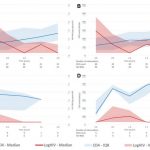
CD4 Count and HIV RNA Trends for HIV-Associated Lymphoproliferative Disorders in Malawi
October 2017 – Given scarce data from sub-Saharan Africa, we describe CD4 count and HIV RNA trends over time among patients with HIV-positive lymphoproliferative disorders in Malawi.
-

Global Health: What’s in It for Us?
October 2017- In this essay, Dr. Satish Gopal addresses why he provides cancer care and conducts research in Malawi, and how global health efforts benefit the United States and human health more broadly.
-

Extranodal Natural Killer/T-cell Lymphoma in Malawi
September 2017- Our experience with these patients highlights that ENKTCL does indeed occur in SSA, increases familiarity with ENKTCL among clinicians and pathologists throughout the region, and emphasizes the need for better diagnosis and treatment for this neglected population.
-
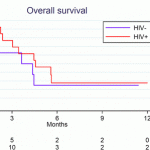
Salvage Chemotherapy for Adults with Relapsed or Refractory Lymphoma
August 2017 – Lymphoma is highly associated with HIV in sub-Saharan Africa and contributes to worse outcomes relative to resource-rich settings. This study describes 21 patients with relapse or refractory lymphoma who were prospectively treated with salvage chemotherapy in Malawi.
-

Cancer Trials in sub-Saharan Africa
July 2017- Dr. Gopal proposes a potential resource-tailored framework for cancer clinical trials and for aligning care and research in SSA.
-
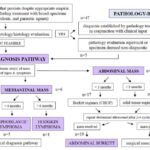
Beyond Endemic Burkitt Lymphoma: Navigating Challenges of Differentiating Childhood Lymphoma Diagnoses Amid Limitations in Pathology Resources in Lilongwe, Malawi
June 2017 Abstract Background. Although Burkitt lymphoma (BL) is the most common childhood lymphoma in sub-Saharan Africa, Hodgkin lymphoma (HL) and other non-Hodgkin lymphomas occur. Diagnosing non-jaw mass presentations is challenging with limited pathology resources. Procedure. We retrospectively analyzed 114 pediatric lymphomas in Lilongwe, Malawi, from December 2011 to June 2013 and compared clinical versus … Read more
-
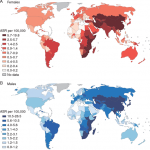
International Cancer Seminars: Esophageal Squamous Cell Carcinoma
June 2017 – An international workshop aimed at examining the state of current science regarding esophageal squamous cell carcinoma. These discussions highlight a series of difficult questions which are recommended to inform and prioritize future research efforts.
-

Navigating Challenges of Differentiating Childhood Lymphoma Diagnoses Amid Limited Pathology Resources in Malawi
June 2017 – Although Burkitt lymphoma (BL) is the most common childhood lymphoma in sub-Saharan Africa, Hodgkin lymphoma (HL) and other non-Hodgkin lymphomas occur. We found that lymphomas other than Burkitt accounted for 35% of childhood lymphoma diagnoses. Although over-reliance on clinical diagnosis for BL was a limitation, confidence in non-BL diagnoses improved with time … Read more
-
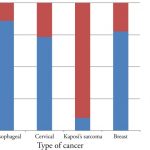
Risk Factors for Common Cancers at Kamuzu Central Hospital in Malawi
June 2017 – In light of limited data regarding risk factors for different cancers in Malawi, we assessed risk factors for and epidemiologic patterns of common cancers among patients treated at Kamuzu Central Hospital. We found that age, smoking, and HIV are important risk factors for the 3 commonest cancer types (oesophageal, KS, and cervical), … Read more
-

HPV in Head and Neck Squamous Cell Carcinoma: A descriptive study
June 2017- We describe the etiologic contribution of human papillomavirus (HPV) in head and neck squamous cell carcinoma (HNSCC), a common cancer in our setting.
-

Breast Cancer Knowledge, Behaviors, and Preferences in Malawi
April, 2017 – Breast cancer is very common in Sub-Sahara Africa, but many misconceptions about it make early detections and treatment difficult. This study looks at what misconceptions exist and what barriers need to be addressed.
-
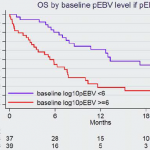
Epstein-Barr virus DNA for pediatric Burkitt lymphoma diagnosis
March 2017 – Diagnosing pediatric Burkitt Lymphoma in sub-Saharan Africa is difficult, as many tools are currently not available. This study found that measuring Epstein-Barr virus DNA could help with setting the diagnosis, prognosis, and predicting the response.
-
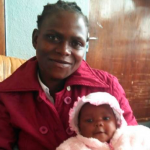
Classical Hodgkin Lymphoma During Pregnancy
February 2017 – A 26-year-old woman in Malawi presented with classical Hodgkin lymphoma, while she was pregnant. This case report describes the treatment that cured her and allowed for the delivery of a healthy daughter.
-
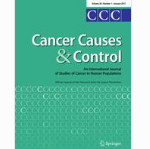
Experiences with Clinical Breast Exam Screening
January 2017 – Clinical breast exams can be a valuable tool in early detection of breast cancer. This study explores the effects of a breast cancer educational talk and breast cancer screenings among women attending urban health clinics in Malawi.
-

Kaposi’s sarcoma in Malawi: a continued problem for HIV-positive and HIV-negative individuals
January 2017- Kaposi’s sarcoma (KS) is the leading cancer in much of sub-Saharan Africa. HIV has resulted in a dramatic increase in KS throughout the region, due to high overlapping prevalence of HIV and the etiologic agent of KS, Kaposi’s sarcoma-associated herpesvirus. We sought to describe contemporary burden and characteristics of KS in the HIV+ and … Read more
-
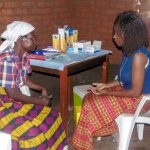
A framework for improving early detection of breast cancer in sub-Saharan Africa
January 2017 – Many women in sub-Saharan Africa are diagnosed with advanced-stage breast cancer. This study explores Malawian breast cancer patients’ perspectives regarding their diagnosis and ability to access care.
-

HIV-associated malignancies in sub-Saharan Africa: an overview
January, 2017 – This review highlights recent developments for HIV-associated malignancies in low and middle income countries and suggests that sustained investment within these settings can help catalyze a cancer care and research agenda that benefit patients worldwide.
-
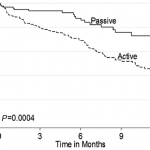
Impact of loss to follow-up on pediatric lymphoma study outcome
November 2016 – Limited follow-up with incomplete retention is common among studies involving pediatric lymphoma patients in sub-Saharan Africa. This study examines the effects of retention and follow-up times on overall survival estimates.
-
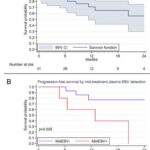
Hodgkin lymphoma, HIV, and Epstein-Barr virus in Malawi: Longitudinal results from the Kamuzu Central Hospital Lymphoma study
October 2016 Background Contemporary descriptions of classical Hodgkin lymphoma (cHL) are lacking from sub-Saharan Africa where human immunodeficiency virus (HIV) and Epstein–Barr virus (EBV) are prevalent. Methods We describe a prospective cHL cohort in Malawi enrolled from 2013 to 2015. Patients received standardized treatment and evaluation, including HIV status and EBV testing of tumors … Read more
-

Subtyping Sub-Saharan Esophageal Squamous Cell Carcinoma
October 2016- This study demonstrates discrete subtypes of esophageal squamous cell carcinoma (ESCC) in SSA, and suggests that the endemic nature of this disease reflects exposure to a carcinogen other than tobacco and oncogenic viruses.
-
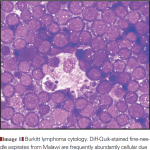
Accurate Real-Time Diagnosis of Lymphoproliferative Disorders in Malawi
September 2016 – Results of a two-year collaboration between Kamuzu Central Hospital and the University of North Carolina to establish a pathology laboratory in Lilongwe, Malawi, showing high concordance between real-time diagnoses in Malawi and final diagnoses in the US.
-
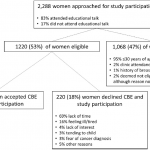
Clinical Breast Exam Screening by Trained Laywomen in Malawi
July 2016 – To make early detection of breast cancer in Malawi possible, training laywomen to screen seems to be a viable option. 1000 examinations provide the evidence that the quality of these screening compares to screenings performed by clinicians.
-
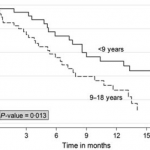
Paediatric Burkitt Lymphoma Treated with Anthracycline-Based Therapy
June 2016 – This paper describes a paediatric cohort of patients with Burkitt lymphoma, the most prevalent paediatric cancer in Malawi. Using the more intense CHOP-regimen to treat those patients did not improve the outcome significantly.
-

Moonshot to Malawi
April 2016 – This opinion piece describes the disparities between cancer prevention and treatment in Malawi versus in the developed world, and questions the ethics of funding health care through academic grants.
-
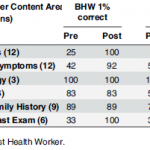
From Community Laywomen to Breast Health Workers
March 2016 – Description of a clinical breast exam training program administered to laywomen in Malawi. Participants who completed training demonstrated competency in conducting clinical breast exams and delivering breast cancer educational talks.
-
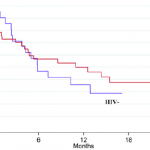
CHOP Chemotherapy for Non-Hodgkin Lymphoma with and without HIV
March 2016 – With no previous prospective studies of aggressive non-Hodgkin lymphoma treated with CHOP in sub-Saharan Africa, results of this study suggest that CHOP can be safe, effective, and feasible for treating aggressive NHL among HIV+/- individuals in Malawi.
-
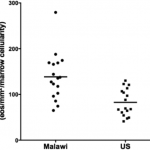
Comparison of Eosinophil Density in Bone Marrow from Malawi and the United States
December 2015 – Representing the first published comparison of bone marrow eosinophil density between patients from SSA and a developed nation, this study shows an increased density among patients in Malawi compared to patients in the US.
-
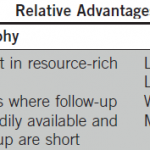
Breast Cancer Screening – A Perspective from Malawi
December 2015 – Breast cancer screening with mammography for early detection of breast cancer is recommended in high-income countries, but in low- and middle income countries the risk/benefit ratio might be different.
-
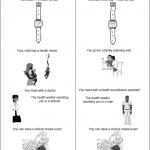
Developing a Discrete Choice Experiment in Malawi: Preferences for Breast Cancer Services
October 2015 – To implement breast cancer screening in Malawi, it is important to have information about the preferences of women concerning this service. This paper describes a discrete choice experiment, to find out what attributes are relevant for patients. Travel time, health encounter, health worker type and sex, and detection strategy were the most … Read more
-

Environmental Risk Factors for Oesophageal Cancer
September 2015 – Exploring environmental factors associated with oesophageal cancer in Malawi, Firewood cooking, cigarette smoking, and use of white maize flour all had strong associations with squamous cell carcinoma of the oesophagus.
-
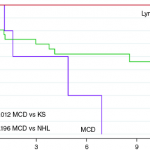
HIV-Associated Multicentric Castleman Disease
August 2015 – Representing the first published report of Multicentric Castleman disease in SSA, this article describes the characteristics and survival for HIV-associated Multicentric Castleman disease in Malawi.
-

High Rates of Cervical Cancer Among HIV-Infected Women in Malawi
May 2015 – Cervical cancer is the most common cancer among women in Malawi. Using pathological specimens from 630 Malawian, this study examines associations between various pathological findings and the presence of high-grade dysplasia.